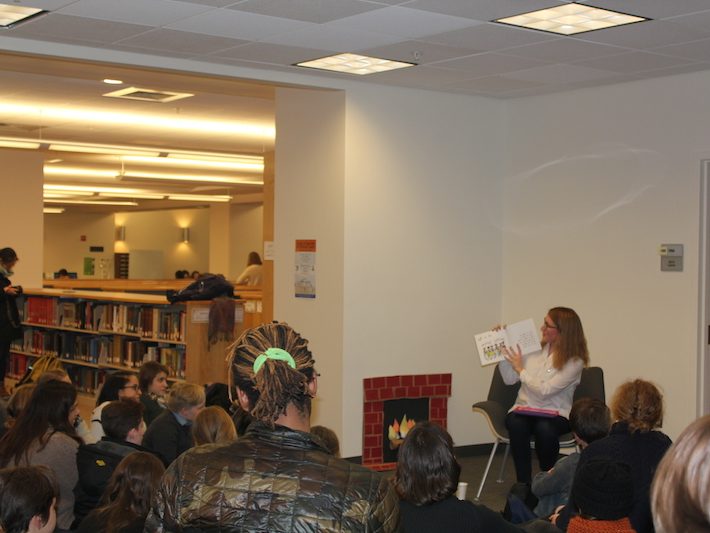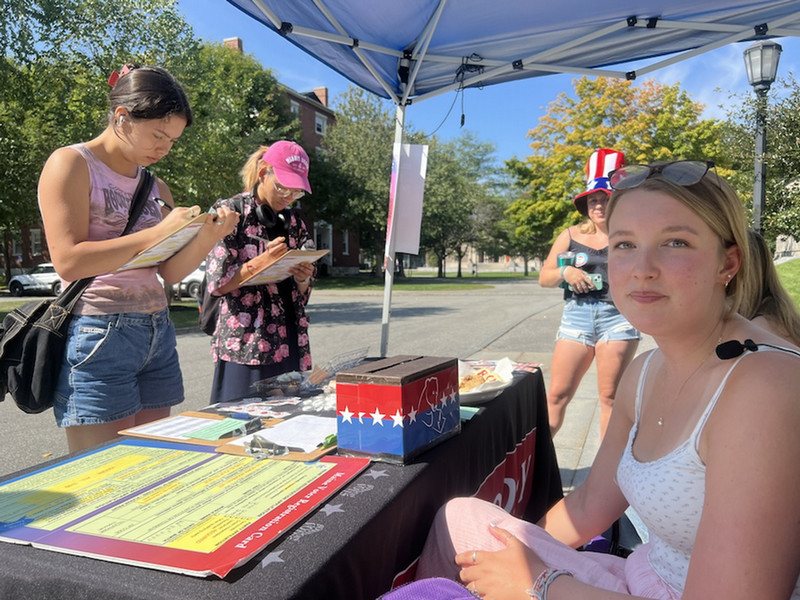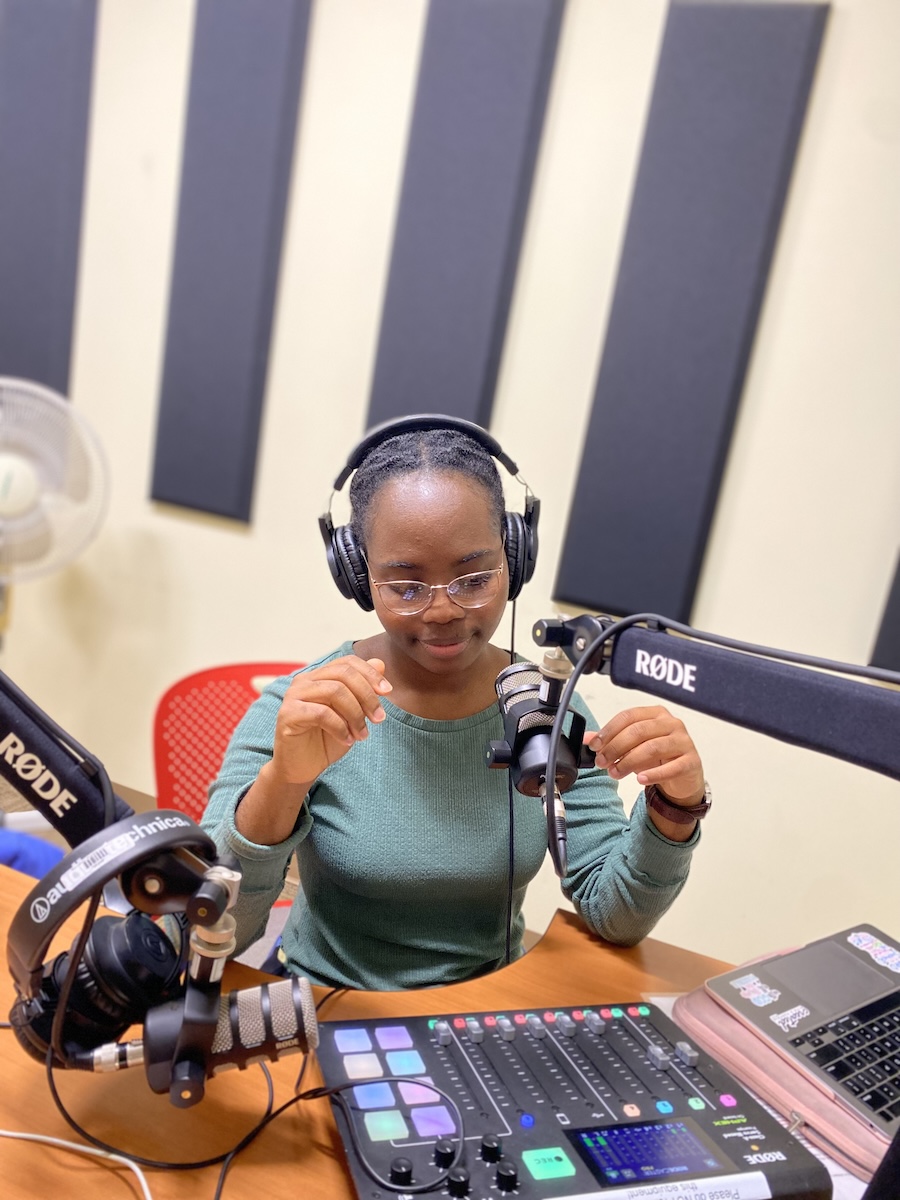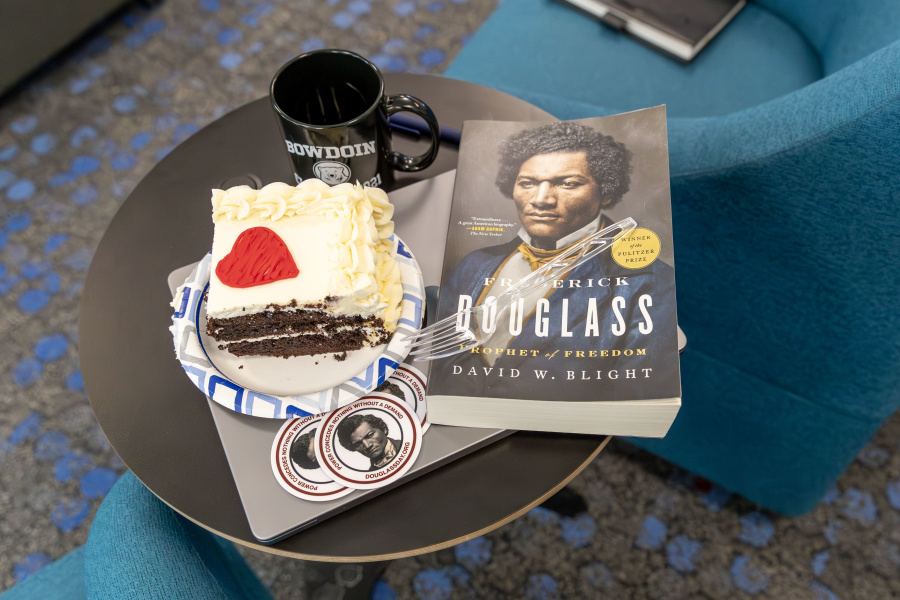Looking at Art, and Considering Gender
By Carly Berlin '18








While students examine issues of gender from many academic perspectives in different classes at Bowdoin, they recently received an invitation to take a fresh look at gender, specifically at gender violence and prevention, within the context of visual arts.
The Office of Gender Violence Prevention and Education and the Bowdoin College Museum of art teamed up to present two events that used art as the prism through which to reflect on these issues.
“The intent was to create different entry points for students to enter the conversation around gender violence and prevention work,” said Lisa Peterson ’07, who is Bowdoin’s associate director of gender violence prevention and education. “By using a lens of art history and visual arts, I hoped to welcome different voices into the discussion, provide a more distant and approachable way to think about gender violence, and to challenge the way we typically engage with the topic.”
The first event featured writer and illustrator Susan Coyne ’07, who read from her recent publication The ABCs of Subverting the Patriarchal Paradigm. Two days later, Bowdoin College Museum of Art hosted a program called “Bearing Witness: Gender Violence and Visual Art.” The confluence of these events allowed students to consider depictions of gender and sexual assault through both contemporary and historical angles.
A crowd of students in the H-L Library Research Lab listened closely as Coyne read from her new book, The ABCs of Subverting the Patriarchal Paradigm, next to a fireplace crafted from construction paper. The book was commissioned for, and recently debuted in the Netflix original film The Incredible Jessica James as a character’s baby shower gift.
“A is for Androgyny,” Coyne read, while displaying an illustration to her audience. B is for bell hooks; C, for compulsive homosexuality. After rounding off her reading with Zadie Smith, Coyne spoke briefly of the gendered nature of her field. “Most practitioners of illustration are women, but white men win the awards,” she said. So many cartoons portray women as objects of consumption, and non-white subjects as caricatures. Coyne is concerned with broadening the array of recognized illustrators, and creating art that speaks to activism.
Peterson noted that hearing Coyne’s work helped prompt “students to think about the role of visual arts in creating conversation about structural inequities that are at the root of gender violence, and also how historical and contemporary factors impact the visibility of artists” from minority groups.
Bearing Witness approached representations of gender and violence through two distinct historical moments: 17th-century Baroque Europe, and 20th-century America. Hosts Ellen Tani, the Andrew W. Mellon Postdoctoral Curatorial Fellow at the Museum, and Peterson invited attendees to view objects pulled from the Museum’s permanent collection. They asked: How do these objects shape our ideas of what sexual violence is? “These images are made, they don’t just exist,” Tani prefaced, as the group of students and townspeople entered the classroom space.
Tani discussed rape as having an allegorical function during the Baroque period. By analyzing representations of classical myths, such as Susannah and the Elders and the Rape of Europa, Tani described rape as subject as having a threefold import. Rape served as a political symbol of male power; as a marital guide encouraging chastity as a value of the nation; and as erotica for male viewers.
Peterson provided context for the more contemporary photographs included in the conversation, namely those by Donna Ferrato, who captured the first documented image of domestic violence on camera. Widely distributed in the 1990s, this image proved controversial and, also, provocative, helping to initiate a national discussion about domestic violence. When viewers on Thursday night questioned the ethical choice implicit in Ferrato’s image, Peterson shared the artist’s quote: “I know if I didn’t take the photo, that no one would believe me.”
Peterson said that “by leveraging artworks across history, we could be thoughtful about the interplay of social norms and expectations with perspectives and behaviors related to gender violence; essentially looking at how artists/artworks are both informed by perceptions at the time, and may also have a role in shaping perceptions of gender violence.”



